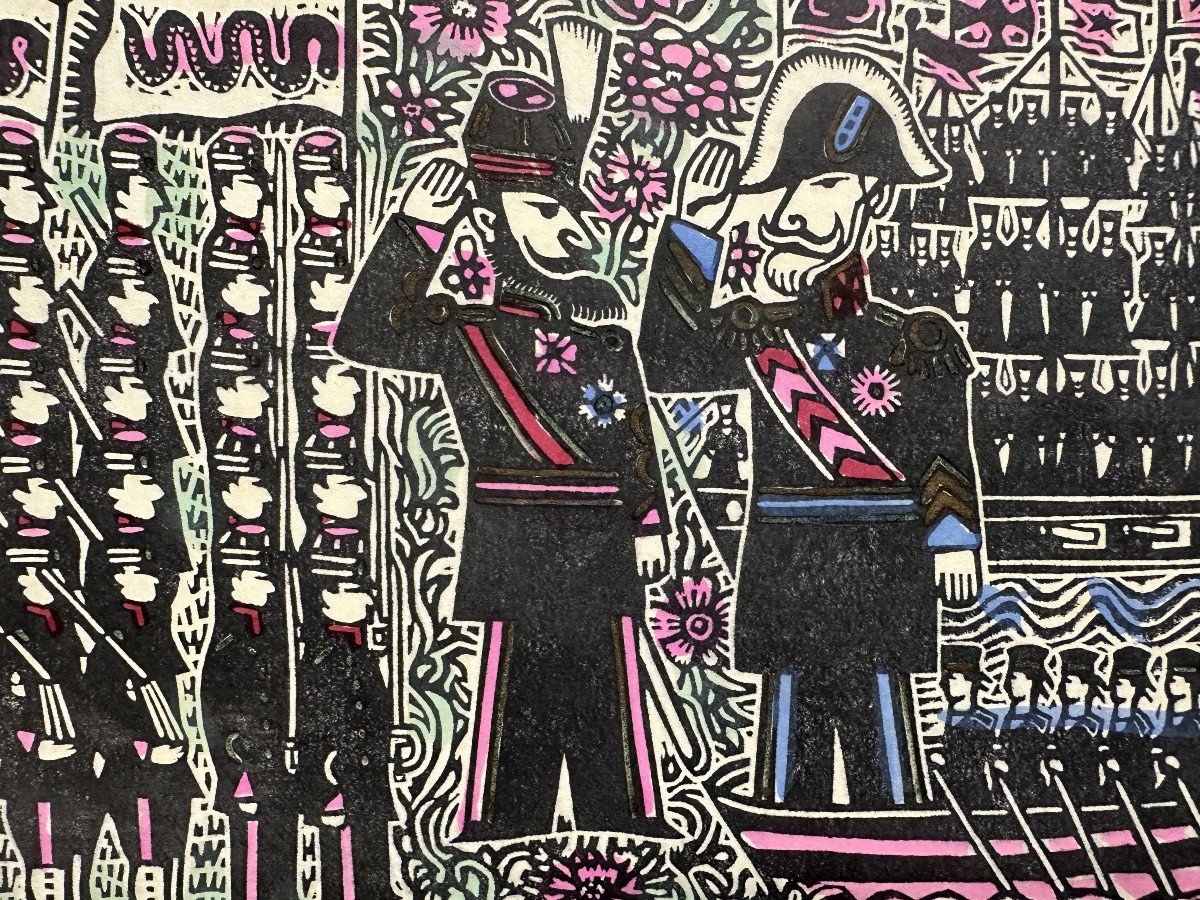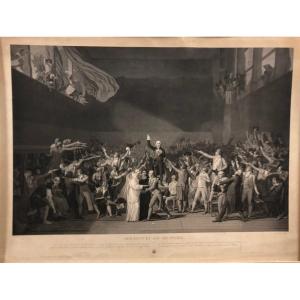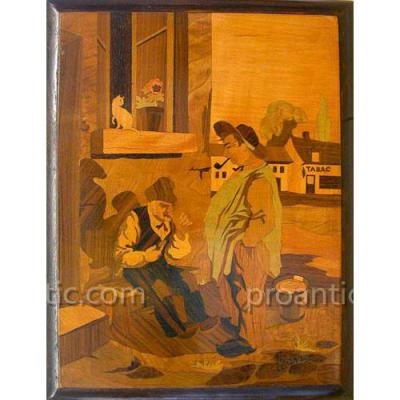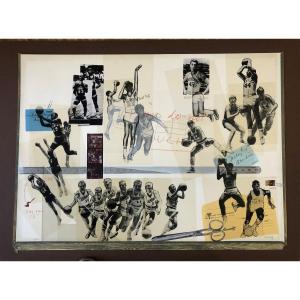Sumio KAWAKAMI (1895-1972) Yokohama; Japan "Land and Sea Army" Wood engraving; Mingei Kawakami Sumio is a Japanese painter of the 19th and 20th centuries, born in 1895 in Yokohama, died in 1972. Biography Kawakami Sumio is an engraver of figures, urban landscapes, still lifes, illustrator and painter of coasters. He never received any formal art education and considered himself an amateur painter. While at that time young Japanese were attracted to Europe, he left in 1917 for Canada and Alaska, where he worked first as a sign painter, then in a fish cannery. On his return home, to satisfy his family, he became a teacher in Tsuruda, a country town, where he remained from 1921 to 1945. Independent and taciturn in character, his contacts with the artistic world and avant-garde movements from before the war, are uncommon. His isolation did not prevent him from painting and writing poems which he illustrated. Throughout this period, and although refusing to sell his production which he preferred to offer to his friends or his students, he illustrated around forty collections of poems and short stories of which he was the author1.
Style and traditionIn 1958, at the age of sixty-three, he became a professional artist. His early works already influenced some of his contemporaries, notably Shikō Munakata, the best-known engraver of his time. From then on recognized as one of the most important and original figures of Japanese art, Kawakami saw numerous exhibitions and received official honors. From 1920, Kawakami devoted himself solely to painting subjects and objects foreign to Japanese tradition: characters with red beards, women in bust, watches and clocks, lamps, leather-bound books..., quite an exoticism which has fascinated Japan since the 16th century and the arrival of the first Portuguese and Dutch traders. In 1929 he joined the Nihon Sōsaku Hanga Kyōkai (Japanese Print Creation Company), and published with Hiratsuka and Onchi Koshiro (1891-1955), an important series of prints entitled: One Hundred Views of New Tokyo, after the great earthquake of 1923.
His journey and his return to the pastWhile his contemporaries readily turned to proletarian and social subjects, he confined himself to the study of the Meiji period (1868-1912) and Nanban Art, a period when he practiced painting of fixed-coaster. From 1942 to 1944, in two years, he published twenty-one collections of prints and texts which he engraved himself, character by character, on separate blocks in order to facilitate the simultaneous printing of the text and the the image. The first book thus published in 1942 was: Namban Sen-ki (Documents on Christian ships), followed in 1943 by Documents on the arrival of tobacco, in 1944 by Images of the barbarians of the South, Christian Buddhas, as well as a series of his views for magic lantern. Considering these various works, it is impossible to discern a country in the middle of an international war. Nevertheless, exhausted by the deprivations and by this intense creativity, he must leave Tsuruda on a freight train, and settle in a small village in Hokkaidō, in order to escape the inconveniences of the debacle. It was there that, with the poet Sarashina Genzō (born in 1904), he took a growing interest in the Mingei movement (traditional crafts), of which he became one of the pillars. When he returned to his teaching position in 1949, he worked with Shikō Munakata and Shōji Hamada, the famous ceramist declared a “Living National Treasure”




































 Le Magazine de PROANTIC
Le Magazine de PROANTIC TRÉSORS Magazine
TRÉSORS Magazine Rivista Artiquariato
Rivista Artiquariato